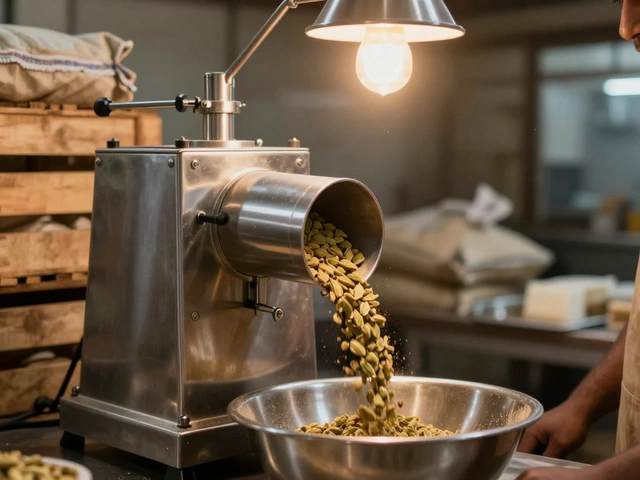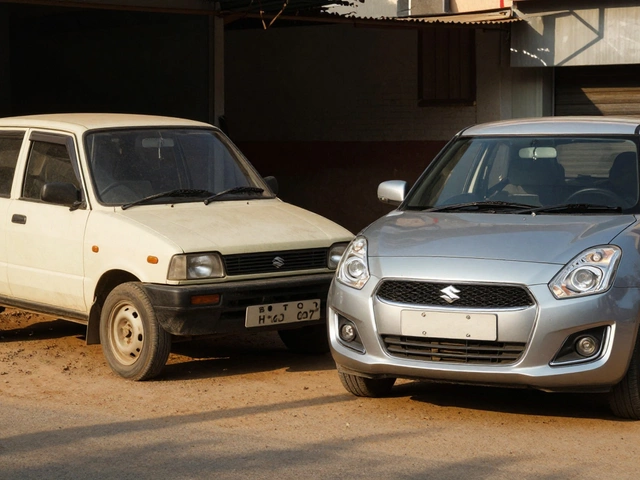Famous Fabrics of Mumbai: Top Textile Choices & Where to Find Them
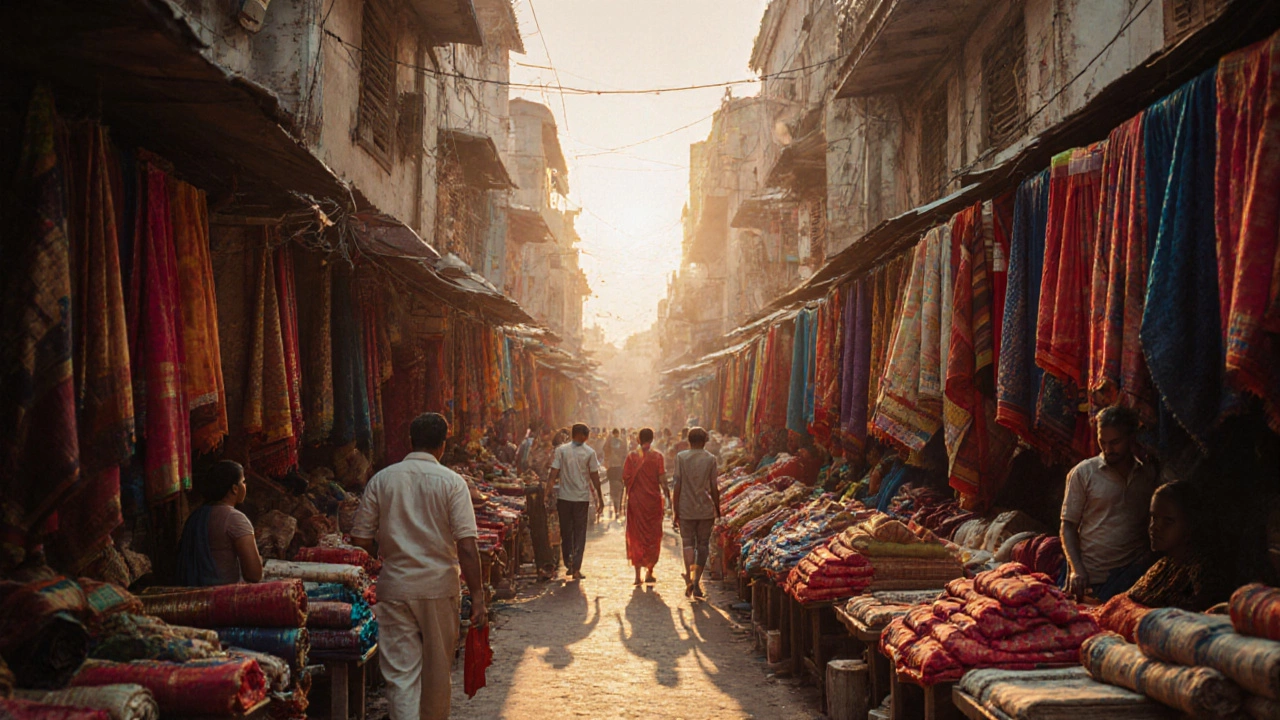
Mumbai Fabric Selector
Choose Your Fabric Needs
Select your criteria to find the best Mumbai fabric for you
Best for:
Quality Check Tips
Where to buy in Mumbai:
When you think of Mumbai, you probably picture bustling streets, vibrant markets, and a fashion scene that mixes tradition with modern flair. Among the kaleidoscope of colors and textures, a few fabrics stand out as true icons of the city. Whether you’re hunting for a classic wedding sari or a casual cotton shirt, knowing which fabrics dominate the local market can save you time and money.
Key Takeaways
- Paithani silk, Maharashtrian cotton, and Khadi are the three fabrics most associated with Mumbai’s textile heritage.
- Kalbadevi and Mangaldas markets are the primary hubs for authentic Mumbai fabrics at wholesale and retail rates.
- Quality checks such as weave density, thread count, and dye fastness help you spot genuine pieces.
- Seasonal climate influences fabric choice: cotton for monsoon, silk for winter celebrations.
- Local manufacturers are increasingly offering eco‑friendly options without compromising on traditional aesthetics.
The Mumbai Textile Landscape
By the early 2000s, Mumbai had cemented its reputation as a distribution nucleus for India’s textile output. The city’s ports enable fast import of raw material, while decades‑old family workshops keep traditional hand‑looming alive. According to the Maharashtra Handloom Board, the state’s textile turnover crossed INR 12,000 crore in 2023, with Mumbai accounting for roughly 30% of sales.
Paithani silk is a handwoven silk fabric from the Paithan region of Maharashtra, renowned for its intricate peacock motifs and gold zari borders. Though its origin lies in Paithan, the silk’s high demand in Mumbai makes it a staple in luxury boutiques and wedding showrooms across the city.
Another pillar is Maharashtrian cotton, a sturdy yet breathable cotton fabric used for everyday wear, school uniforms, and summer kurtas. Its natural fibers suit the city’s humid monsoon climate, and local weavers add simple block prints that reflect regional art.
Finally, Khadi is a handspun, handwoven cloth championed by Mahatma Gandhi and revived in recent years as an eco‑friendly alternative. Mumbai’s designer houses now pair Khadi with contemporary cuts, giving the fabric a fresh, urban appeal.
Iconic Fabrics That Define Mumbai Style
- Paithani Silk
Paithani combines mulberry silk warp with tussar silk weft, creating a glossy texture. The fabric typically features motifs such as parrots, vines, and geometric patterns, all woven in vibrant reds, golds, and blues. A genuine Paithani sari can cost between INR 30,000 and INR 150,000, depending on the intricacy of the design.
- Maharashtrian Cotton
This cotton is woven on traditional pit looms, resulting in a slightly coarse hand feel that improves with washing. It’s dyed using natural vegetable pigments, offering shades from earthy beige to bright indigo. Because of its durability, the fabric is popular for school uniforms and men’s kurtas, priced from INR 250 to INR 800 per meter.
- Khadi
Khadi’s hallmark is its irregular weave, giving each piece a unique texture. Modern producers often blend cotton with silk or linen to enhance drape while maintaining sustainability. Prices range from INR 400 to INR 1,200 per meter, making it accessible for daily wear.
- Bandhani
Although traditionally linked to Gujarat, Bandhani tie‑dye fabrics have found a thriving market in Mumbai’s street bazaars. Small circles of dyed fabric are tied on the cloth before immersion, creating dotted patterns that are especially popular for festive wear.
- Bengal Silk
Imported via Kolkata’s port, Bengal silk is prized for its smooth finish and rich mauve hues. Mumbai’s boutiques often showcase Bengal silk saris alongside Paithani, catering to clients who prefer a softer sheen.
Where to Buy Authentic Fabrics in Mumbai
The city’s textile markets are organized by neighborhood, each offering a distinct shopping experience.
Kalbadevi Market is a historic wholesale hub located in South Mumbai, famous for bulk silk and cotton sales. Vendors here often allow buyers to inspect raw rolls, negotiate prices, and even request custom dyeing.
Mangaldas Market in Girgaon caters to boutique owners and individual shoppers alike, offering a mix of traditional handloom fabrics and contemporary printed cotton. Its narrow alleys are lined with stalls that display sample garments, making it easy to feel the fabric before purchasing.
For premium, designer‑level fabrics, the Fashion Street on Linking Road hosts showrooms that curate Paithani, Khadi, and Bengal silk collections curated by famous Indian designers.
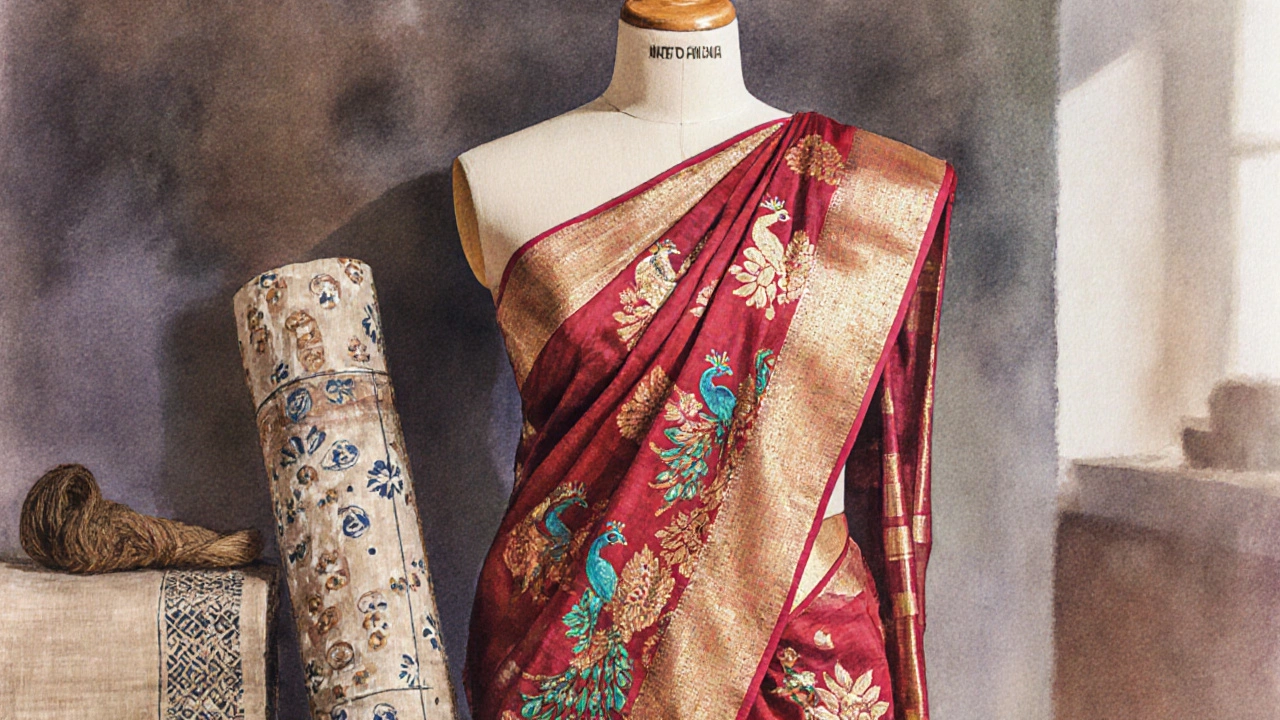
How Fabrics Are Produced: From Loom to Store
Understanding the production chain helps you spot authenticity. Here’s a quick overview:
- Fiber Selection: For silk, mulberry silkworms are reared in Maharashtra’s Konkan region; for cotton, the Kalyan district provides high‑finely spun fiber.
- Yarn Preparation: Yarn is spun on a traditional charkha for Khadi, while mechanized spindle machines handle silk and cotton for higher volume.
- Weaving: Hand‑loom weavers in Paithan use pit looms, creating the characteristic raised motifs. Cotton and Khadi are woven on floor looms that allow quick pattern changes.
- Dyeing & Finishing: Natural vegetable dyes (indigo, turmeric, madder) are common for cotton, whereas silk often receives acid dyes to achieve deeper hues. Finishing steps include steaming, starching, and ironing to enhance sheen.
Local manufacturers in the Mumbai suburbs such as Bhiwandi and Thane have upgraded to low‑energy looms, reducing carbon emissions by up to 35% without compromising the hand‑crafted feel.
Choosing Quality: Tips for Shoppers
- Check weave density: Genuine silk should have a tight, even weave; run a finger across the surface-if you feel gaps, it’s likely synthetic.
- Inspect thread count on cotton: Higher counts (above 40) indicate smoother fabric and better durability.
- Test dye fastness: Moisten a corner and rub with a white cloth. Minimal color transfer signals quality dyeing.
- Look for hand‑spun marks on Khadi: Small irregularities are a sign of authentic hand‑spun yarn.
- Ask for a certificate of origin when buying high‑end silk; reputable dealers will provide a guarantee of the fabric’s provenance.
Comparison of Popular Mumbai Fabrics
| Fabric | Primary Material | Typical Use | Price Range (per meter) | Best Season |
|---|---|---|---|---|
| Paithani Silk | Mulberry & Tussar silk | Wedding sarees, formal attire | INR 2,500 - 12,000 | Winter / Festive |
| Maharashtrian Cotton | d>Cotton | Daily wear, uniforms | INR 250 - 800 | Monsoon / Summer |
| Khadi | Handspun cotton / silk blend | Casual, eco‑friendly fashion | INR 400 - 1,200 | All seasons (layered) |
| Bandhani | Cotton or silk base | Festive dresses, accessories | INR 600 - 2,000 | Spring / Festive |
| Bengal Silk | Pure silk | Luxury sarees, drapes | INR 1,800 - 5,000 | Winter |
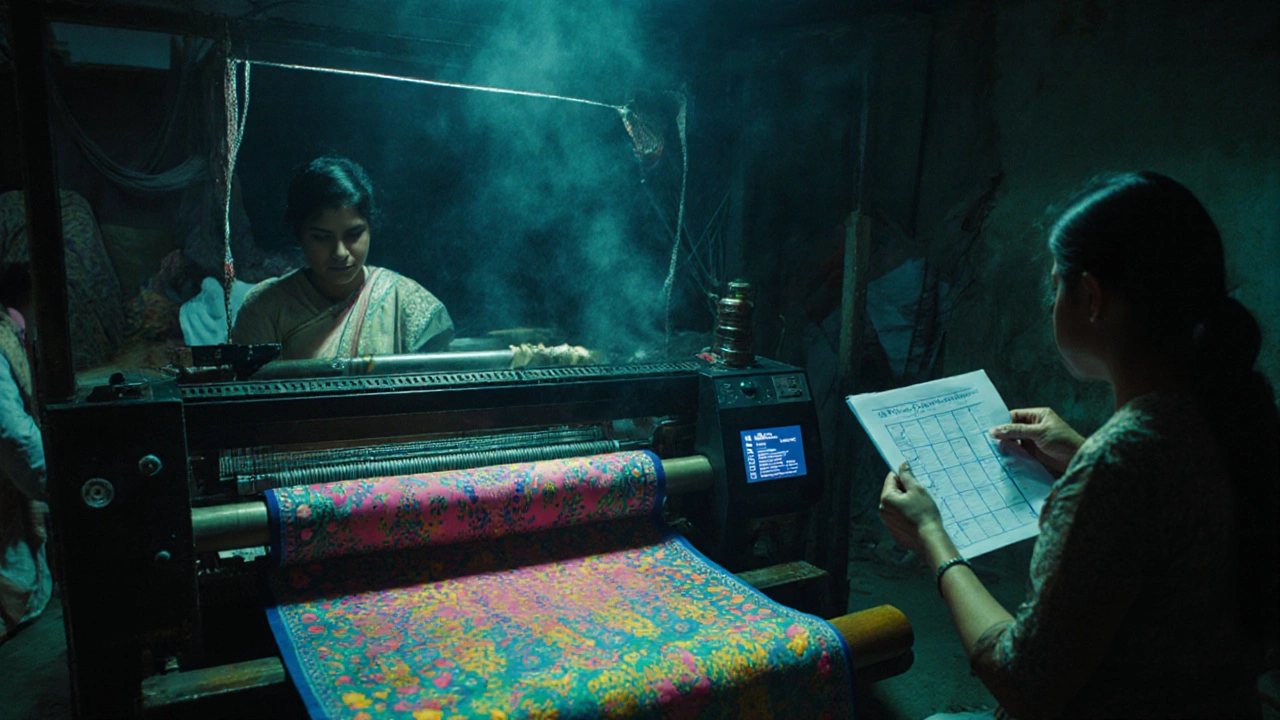
Future Trends: Sustainable and Tech‑Driven Textiles
In the past few years, Mumbai’s textile sector has embraced sustainability. Organic cotton farms in Vidarbha supply fibers that are pesticide‑free, and several manufacturers have received GOTS certification. Simultaneously, digital printing on cotton and silk is reducing water usage by up to 60% compared to traditional block printing.
Tech‑enabled inventory management platforms like Triti and Pristine help small workshops track fabric batches, ensuring traceability from loom to consumer. This transparency is becoming a selling point as buyers demand ethical provenance.
Frequently Asked Questions
What makes Paithani silk different from other silks?
Paithani silk blends mulberry silk with tussar silk, creating a natural contrast between glossy warp and matte weft. Its signature peacock and lotus motifs are woven, not printed, giving each saree a unique, hand‑crafted feel.
Where can I buy genuine Khadi in Mumbai?
Kalbadevi Market and the Khadi Bhavan on CST Road host certified Khadi vendors. Look for the GOTS label and ask for a batch certificate to ensure authenticity.
Is Bandhani suitable for everyday wear?
Bandhani is traditionally festive, but lightweight cotton versions work well as casual shirts or scarves during the hot season, especially when the colors are pastel.
How do I test the quality of cotton before buying?
Feel the fabric; a smooth, even texture indicates high thread count. Pull a small thread - genuine cotton won’t break easily. Finally, a simple water test (dip a corner) shows whether the dye bleeds.
What price should I expect for a wedding‑grade Paithani sari?
A classic Paithani with extensive gold zari can range from INR 30,000 to over INR 150,000, depending on the intricacy of the motifs and the silk-to-zari ratio.
Next Steps for the Curious Shopper
If you’re ready to explore Mumbai’s fabric scene, start by visiting Kalbadevi Market on a weekday morning when merchants are most responsive. Bring a list of the fabrics you’re interested in, ask for sample swatches, and compare them against the quality checklist above. For larger orders, consider contacting a local wholesaler in Bhiwandi; they can offer bulk discounts and even arrange private dyeing services.
Lastly, keep an eye on sustainability labels. Choosing GOTS‑certified cotton or organically dyed silk not only supports ethical practices but also often delivers a product that feels softer and lasts longer.


